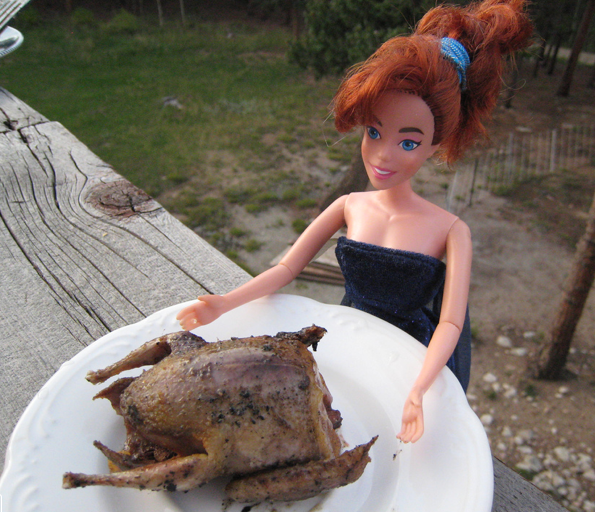{I’m away this week. In addition to the delights of being with family & friends, I had the opportunity to speak to a MOPS group in New Jersey. I’m going to share some of the talk with you here. If I get my tech stuff together, I might even go all fancy and post it as a podcast so you can hear my squeaky little voice. Here’s the final part of three parts.}
 I’m really certain that eating together–as families, as friends, as women–and enjoying food–is powerful, powerful stuff.
I’m really certain that eating together–as families, as friends, as women–and enjoying food–is powerful, powerful stuff.
- It can help kids do better in school.
- It can help kids avoid substance abuse.
- It can keep kids at a healthy weight.
- It’s even been shown to prevent eating disorders in girls–provided there’s not that “fat talk” going on at the table, of the kind I grew up with.
And yet, family dinners are on the decline:
- We’re busy.
- Everyone likes and or hates different stuff.
- Kids are gross to eat with sometimes.
- All that is true. But they are still worth fighting for.
Some of the very practical, ordinary strategies I have for making dinner happen:
- Planning. Make a REALISTIC menu for the week. Don’t go all Martha Stewart on yourself. Start with where you are.
- Cooking ahead. Kids are crabbiest at dinnertime. Don’t try and cook when the crew is already plotting mutiny. Do as much prep as possible during a happier time.
- Cooking once, eating twice. Make intentional leftovers. If they don’t like eating the same thing 2 nights in a row, do this: make 2 casseroles at the same time (not that much more work than making 1) but freeze one.
- Relaxing about what the kids will eat/won’t eat. Young kids–and my kids are still young–are forming their tastes. It’s great to introduce them to new foods. But don’t be surprised when they rebel at new foods. It can take tasting something 10x before you decide you like it.
Try the division of responsibility:
Dietician Ellyn Satter says that parents are responsible for the “What” and “When” of eating, children are responsible for “whether” and “how much.” That doesn’t mean that they can choose cake over carrots. That means, if they choose to eat mostly rice and hardly any stir-fry, it’s a good idea not to micromanage that. We want to protect their sense of enjoyment and self regulation. In our house, when I make something I’m fairly certain the kids aren’t going to want to try, I ask them to try it, but I don’t make it a fighting point. I let them eat the rice, or whatever. It’s a good idea, too, to have ONE consistent fall-back plan. For some families it’s a PB&J. One of our favorites is apple slices and peanut butter. As in, you don’t like the curry? Ok. You may eat the rice. You may have apples and peanut butter. But that’s it. No special meals.
Again, the point is to ENJOY food and ENJOY one another’s company. Fads and fallacies regarding health can come and go. This is about the lifelong lesson. This is about connecting with one another over shared meals. This may even be about connecting with God through food.
Sometimes people get nervous when I talk like this about food. Like it is too permissive, too undisciplined. This doesn’t mean that you can’t follow your vegetarian convictions, or your local-food preference, or your organics or whatever. I have a few of those kind of convictions of my own. But I really believe that we won’t get well as a culture of disordered eaters until we give ourselves the permission to enjoy food and be satisfied with it without guilt. That’s at the heart of eating with joy. And you know what? The geeky studies I can’t help referencing support the idea that this right here does lead people to healthier weights, healthier self image, better cholesterol, whatever. Enjoying food in an un-conflicted way turns out to be good for us in lots of ways.
And that’s because, for example, when you feel comfortable accepting food–the way very young children do–you are in touch with your feelings of hunger, you’re in touch with your feelings about the food, and you’re actually less likely to overdo it. For example, let’s say you go out to eat and instead of getting what you really want–chicken tenders, fries, and a chocolate soda–you get a salad and diet coke. Except that’s not what you really want. And so it doesn’t really satisfy you. So when you get home, or whatever, to your next stop, there are M&Ms there. You don’t even like M&Ms, they’re not your favorite, but you’re feeling deprived and not quite satisfied, so you eat some, more than you want to, and then your stomach feels weird, sort of bloated, and you spiral into a bunch of negative thoughts about yourself, your weight, food, whatever.
Is it going to make you super-skinny? It probably won’t, unless that was your body type to begin with. But is it going to free you up to be more fully, happily, and contentedly the person that you were created to be, and to help your kids become more fully, happily, and contentedly the people they were created to be?
It probably will.













